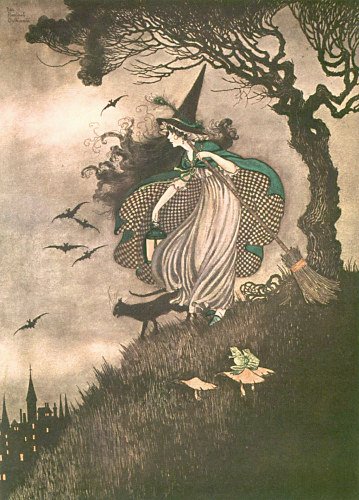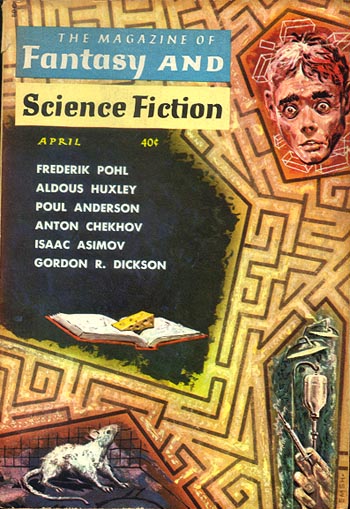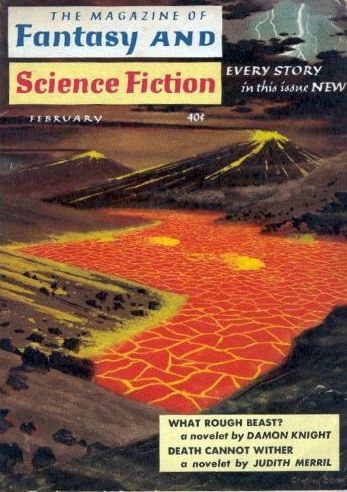Happy birthday to me! I entered my fifth decade of life yesterday; I hope middle age will be kind to me.
This month's F&SF certainly has been. I have an interesting mix of stories about which to relate.
It has often been said that, to be a good writer, one must be an avid reader. There is no better way to learn the tricks of the trade than to see how others have manipulated the printed word. I, myself, have been a writer for two decades, but I still often find some new technique that impresses me sufficiently to enter my repertoire.

Permission to republish graciously granted by Ida Rentoul Outhwaite
Something that struck me while reading Gordon Dickson's quite good modern fantasy, "The Amulet," was its focus on sensual descriptions. You always know the temperature and flavor of the air, the tactile qualities of a seat, the character of sound and light. It makes this a very feeling story, very visceral.
The following psi/space-travel story, by brand-newcomer Anne McCaffrey, The Lady in the Tower, is far more spare in its descriptions. The focus is on a series of telepathic conversations that presumably carry little sensual information. It is a story drawn almost in skeleton sparseness, and it makes sense in the context.
Seeing the two techniques in stark juxtaposition really drove home how important it is to focus (or choose not to focus) on the scenery. Frankly, when I write fiction, I am often afraid to lavish attention on the background or prosaic items for fear of boring my audience. Yet spending some extra time describing an item or sensation is the literary equivalent of conveying the focus of a character's attention. It happens in real life, so it should happen in a story, where appropriate.
So an oldish dog can learn new tricks!
Aside from all that, you probably want to know more about the stories, themselves. Well, The Amulet has witches and all the paraphernalia associated with them. It's a dark story with a dark viewpoint character, about as different from The Man in the Mailbag (April 1959 Galaxy) as you can get. Gordy's got some range.
McCaffrey's tale features a future in which a few supremely powerful telepaths with the ability to teleport matter have become the foundation for an interstellar transportation system. It is a first contact story in several ways, and it is also a love story. I found it very good though perhaps with a bit of the rough-hewn quality one associates with new writers. I hope we see more of Anne in the future.
Speaking of unusual writing styles, Asimov has a piece of fiction in the issue in addition to his science article. Unto the Fourth Generation is an interesting mood piece involving the evolution of a name's spelling and pronunciation over time. Perhaps the only "Jewish" piece I've seen Asimov write, it is a departure from his usual unadorned, functional technique. I liked it.
That's that for this installment, but there are still several more stories on which to report. And if you're an Asimov-o-phile, you'll like this column 'round the end of the month.
Stay tuned!
P.S. Some have inquired as to what happened to the March F&SF and how I got my hands on an early April release. The answer is simple–the author of this column pulled a "Charlie Gordon" (as opposed to a "David Gordon," which some would argue is worse). I actually managed to pick up both the March and April copies at the same time at the source, the latter being a pre-release proof. So entranced was I by the cover that I started reading and forgot that I needed to do March first.
Please forgive me, and if the order bothers you, I recommend swapping your left eye for your right, or perhaps reading upside down.
(Confused? Click here for an explanation as to what's really going on)
This entry was originally posted at Dreamwidth, where it has comments. Please comment here or there.

















